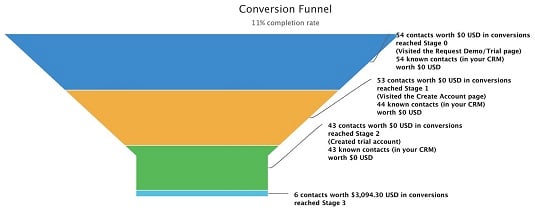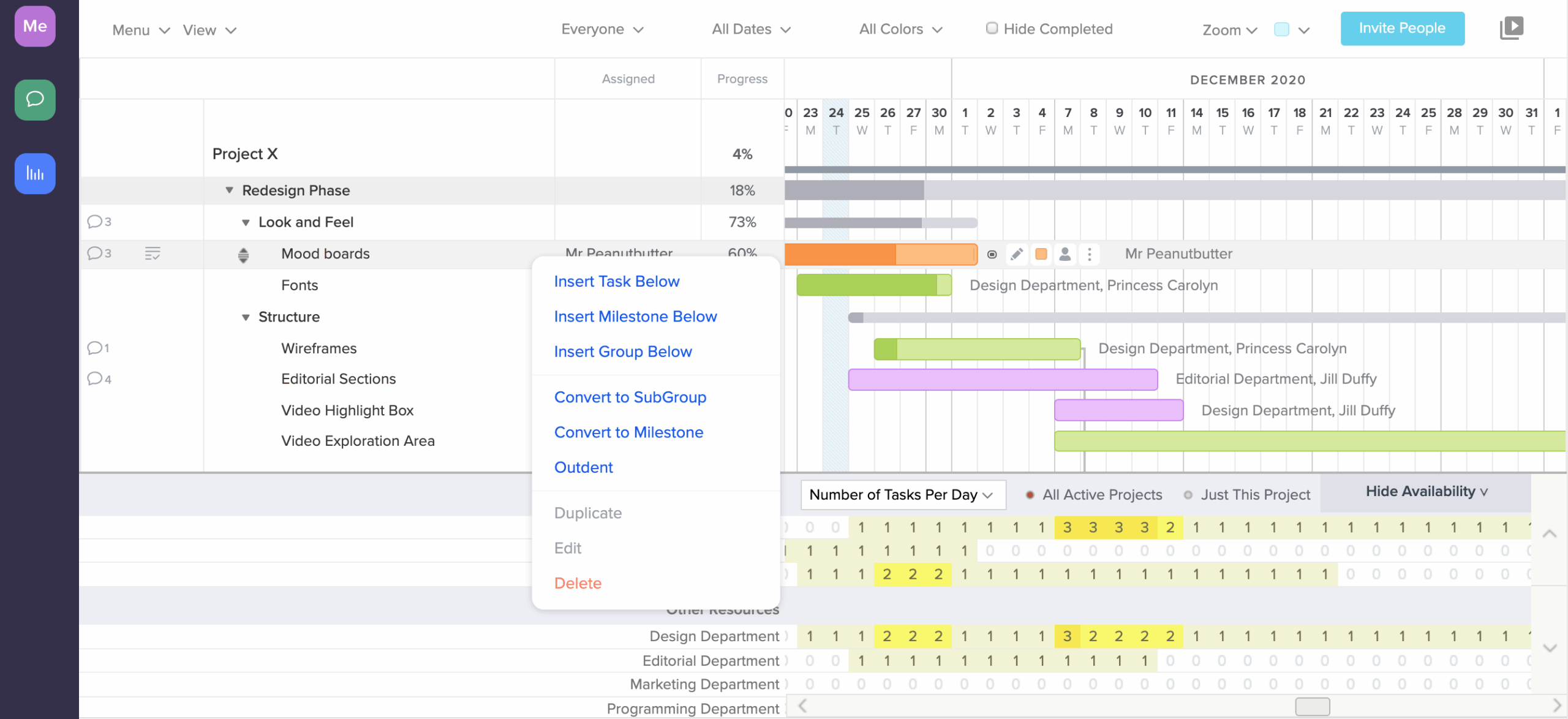In the dynamic world of marketing, staying ahead of the curve is not just an advantage; it’s a necessity. Businesses are constantly seeking innovative ways to connect with their audience, personalize their experiences, and ultimately, drive revenue. One of the most powerful tools in this quest is Customer Relationship Management (CRM) marketing. This approach goes beyond mere lead generation; it’s about building lasting relationships with customers, understanding their needs, and tailoring your marketing efforts to resonate with them on a personal level.
This article dives deep into the world of CRM marketing, showcasing compelling case studies that illustrate the transformative power of this strategy. We’ll explore real-world examples of businesses that have leveraged CRM to achieve remarkable results, from increased sales and improved customer retention to enhanced brand loyalty and operational efficiency. Get ready to be inspired as we uncover the secrets behind their success and provide you with actionable insights to fuel your own CRM marketing endeavors.
What is CRM Marketing? A Foundation for Success
Before we delve into the case studies, let’s clarify what CRM marketing actually entails. CRM marketing is a strategic approach that uses customer relationship management (CRM) systems to manage and analyze customer interactions and data throughout the customer lifecycle. The primary goal is to improve business relationships with customers, leading to increased sales, improved customer retention, and enhanced profitability. It’s about understanding your customers, anticipating their needs, and delivering personalized experiences that build trust and loyalty.
At its core, CRM marketing involves:
- Data Collection and Management: Gathering and organizing customer data from various sources, including website interactions, social media, email interactions, and purchase history.
- Segmentation: Dividing your customer base into distinct groups based on demographics, behavior, preferences, and other relevant criteria.
- Personalization: Tailoring marketing messages, offers, and experiences to individual customer needs and preferences.
- Automation: Using CRM systems to automate repetitive tasks, such as email marketing, lead nurturing, and customer service workflows.
- Analytics and Reporting: Tracking and analyzing key performance indicators (KPIs) to measure the effectiveness of your CRM marketing efforts and identify areas for improvement.
By adopting a CRM marketing strategy, businesses can move beyond generic, one-size-fits-all marketing campaigns and create highly targeted, personalized experiences that resonate with individual customers. This, in turn, leads to greater customer satisfaction, increased brand loyalty, and ultimately, a stronger bottom line.
Why CRM Marketing Matters: The Benefits Unveiled
The advantages of CRM marketing are numerous and far-reaching. Here are some of the key benefits that businesses can realize by implementing a well-executed CRM strategy:
- Increased Sales: By understanding customer needs and preferences, businesses can create more effective marketing campaigns that generate leads and drive sales.
- Improved Customer Retention: Personalized experiences and proactive customer service build loyalty and reduce customer churn.
- Enhanced Customer Satisfaction: Meeting customer expectations and providing exceptional service leads to happier customers who are more likely to recommend your business to others.
- Increased Efficiency: Automation and streamlined workflows save time and resources, allowing your team to focus on more strategic initiatives.
- Better Decision-Making: Data-driven insights provide a clear understanding of customer behavior and market trends, enabling businesses to make more informed decisions.
- Improved Brand Loyalty: Building strong relationships with customers fosters loyalty and advocacy, turning them into brand ambassadors.
- Cost Reduction: Targeted marketing campaigns and efficient processes can reduce marketing costs and improve overall profitability.
In essence, CRM marketing is not just about selling; it’s about building relationships. It’s about creating a customer-centric culture that puts the needs of your customers first. And as we’ll see in the case studies below, this approach can yield remarkable results.
Case Study 1: The E-commerce Giant and the Personalized Experience
Let’s kick things off with a classic example: a massive e-commerce retailer. This company, with a global presence and millions of customers, understood that in the highly competitive online market, standing out requires more than just competitive pricing. They needed to create a personalized experience that would keep customers coming back for more.
The Challenge: The sheer volume of customers and products made it difficult to provide a personalized experience at scale. Generic marketing messages were ineffective, and customer churn was a significant concern.
The CRM Solution: The company implemented a sophisticated CRM system that integrated data from various sources, including website activity, purchase history, browsing behavior, and customer service interactions. They used this data to segment their customer base into various groups based on their interests, purchase patterns, and demographics. Armed with this knowledge, they then launched highly targeted marketing campaigns.
The Implementation:
- Personalized Product Recommendations: Based on a customer’s browsing history and past purchases, the website would recommend products tailored to their individual interests.
- Targeted Email Marketing: Customers received personalized emails featuring products they were likely to be interested in, based on their browsing history, abandoned cart items, and past purchases.
- Dynamic Website Content: The website’s content was dynamically adjusted to reflect the customer’s interests and preferences.
- Automated Customer Service: A chatbot was implemented to handle common customer inquiries, freeing up human agents to focus on more complex issues.
The Results: The results were nothing short of impressive:
- Increased Sales: Sales increased by 25% within the first year of implementing the CRM system.
- Improved Customer Retention: Customer churn decreased by 15%.
- Higher Customer Lifetime Value (CLTV): The average CLTV increased significantly, as customers were more likely to make repeat purchases.
- Enhanced Brand Loyalty: Customers felt valued and understood, leading to increased brand loyalty and advocacy.
This case study highlights the power of personalization in driving sales and building customer loyalty. By leveraging CRM data, the e-commerce giant was able to create a more engaging and relevant experience for its customers, resulting in significant business growth.
Case Study 2: The SaaS Company and the Lead Nurturing Powerhouse
Software as a Service (SaaS) companies often face the challenge of converting leads into paying customers. The sales cycle can be lengthy, and it’s crucial to nurture leads effectively to guide them through the sales funnel. This is where CRM marketing can play a vital role.
The Challenge: The SaaS company struggled with a high lead-to-customer conversion rate. Many leads were lost along the way, and the sales team spent a significant amount of time on unqualified leads.
The CRM Solution: The company implemented a CRM system that automated its lead nurturing process. They integrated the CRM with their marketing automation platform to track lead behavior, score leads based on their engagement, and trigger automated email sequences.
The Implementation:
- Lead Scoring: Leads were scored based on their website activity, email engagement, and other interactions. This helped the sales team prioritize the most promising leads.
- Automated Email Sequences: Leads were automatically enrolled in targeted email sequences based on their lead score and stage in the sales funnel.
- Personalized Content: The emails provided valuable content tailored to the lead’s specific needs and interests.
- Sales Team Alerts: The sales team was alerted when a lead showed strong engagement, such as downloading a case study or requesting a demo.
The Results: The results were transformative:
- Increased Lead-to-Customer Conversion Rate: The conversion rate increased by 30%.
- Reduced Sales Cycle Length: The average sales cycle length decreased by 20%.
- Improved Sales Team Efficiency: The sales team was able to focus on the most qualified leads, leading to increased productivity.
- Higher Revenue: The company experienced significant revenue growth as a result of the improved conversion rates and sales efficiency.
This case study exemplifies the power of lead nurturing in the SaaS industry. By automating the lead nurturing process and providing personalized content, the SaaS company was able to convert more leads into paying customers, resulting in significant business growth.
Case Study 3: The Non-Profit Organization and the Donor Engagement Strategy
Non-profit organizations rely heavily on donor support to achieve their mission. Building strong relationships with donors is crucial for securing ongoing funding and fostering long-term engagement. CRM marketing can be instrumental in this endeavor.
The Challenge: The non-profit organization struggled with donor retention and engagement. They lacked a centralized system to track donor interactions and personalize their communications.
The CRM Solution: The organization implemented a CRM system specifically designed for non-profits. They used the CRM to track donor information, donation history, and communication preferences. They leveraged this data to personalize their communications and create targeted campaigns.
The Implementation:
- Personalized Thank-You Notes: Donors received personalized thank-you notes and updates on how their donations were being used.
- Targeted Email Campaigns: Donors were segmented based on their giving history and interests, and they received targeted email campaigns highlighting relevant programs and initiatives.
- Event Invitations: Donors were invited to exclusive events and gatherings.
- Volunteer Opportunities: Donors were offered opportunities to volunteer their time and skills.
The Results: The results were remarkable:
- Increased Donor Retention: Donor retention increased by 20%.
- Higher Donation Amounts: The average donation amount increased by 15%.
- Improved Donor Engagement: Donors felt more connected to the organization and were more likely to participate in its activities.
- Enhanced Brand Reputation: The organization’s reputation as a trusted and reliable charity was enhanced.
This case study demonstrates the importance of donor engagement in the non-profit sector. By using CRM to personalize communications and build relationships, the organization was able to increase donor retention, raise more funds, and strengthen its overall impact.
Case Study 4: The Retail Chain and the Loyalty Program Revolution
Retail chains often use loyalty programs to reward their customers and encourage repeat purchases. CRM marketing can be used to supercharge these programs and create a more engaging and rewarding experience for loyal customers.
The Challenge: The retail chain’s loyalty program was underperforming. Customers were not actively engaged, and the program was not effectively driving repeat purchases.
The CRM Solution: The retail chain integrated its CRM system with its loyalty program. They used the CRM to track customer purchase history, preferences, and engagement with the loyalty program. They then used this data to personalize rewards and offers.
The Implementation:
- Personalized Rewards: Customers received personalized rewards and offers based on their purchase history and preferences.
- Exclusive Promotions: Loyalty program members received exclusive access to promotions and discounts.
- Birthday Rewards: Customers received special rewards on their birthdays.
- Tiered Loyalty Levels: The loyalty program was tiered, with higher levels offering more exclusive benefits.
The Results: The results were truly impressive:
- Increased Loyalty Program Enrollment: Loyalty program enrollment increased by 30%.
- Higher Customer Spend: Customers in the loyalty program spent an average of 20% more than non-members.
- Improved Customer Retention: Customer retention increased by 18%.
- Enhanced Brand Loyalty: Customers felt valued and appreciated, leading to increased brand loyalty.
This case study illustrates how CRM marketing can be used to revitalize a loyalty program and drive significant business results. By personalizing rewards and offers, the retail chain was able to create a more engaging and rewarding experience for its loyal customers, resulting in increased sales and customer retention.
Case Study 5: The Healthcare Provider and the Patient Relationship Management
The healthcare industry is increasingly focused on patient-centric care. CRM marketing can play a vital role in improving patient communication, enhancing patient satisfaction, and streamlining administrative processes.
The Challenge: The healthcare provider struggled with inefficient communication, scheduling challenges, and a lack of personalized patient care.
The CRM Solution: The healthcare provider implemented a CRM system specifically designed for the healthcare industry. They used the CRM to manage patient data, schedule appointments, send appointment reminders, and personalize communication.
The Implementation:
- Automated Appointment Reminders: Patients received automated appointment reminders via email and text message.
- Personalized Health Information: Patients received personalized health information and resources based on their medical history and needs.
- Online Patient Portals: Patients could access their medical records, schedule appointments, and communicate with their healthcare providers through online patient portals.
- Improved Communication: Healthcare providers could communicate more effectively with patients, providing timely updates and answering their questions.
The Results: The outcomes were significant:
- Reduced No-Show Rates: No-show rates decreased by 15% due to automated appointment reminders.
- Improved Patient Satisfaction: Patient satisfaction scores increased as a result of improved communication and personalized care.
- Increased Efficiency: Administrative processes were streamlined, freeing up healthcare providers to focus on patient care.
- Enhanced Patient Engagement: Patients were more engaged in their own healthcare, leading to better health outcomes.
This case study highlights the transformative potential of CRM in the healthcare industry. By leveraging CRM, the healthcare provider was able to improve patient communication, enhance patient satisfaction, and streamline its operations, leading to better patient outcomes and increased efficiency.
Key Takeaways: Lessons Learned from the CRM Marketing Success Stories
These case studies reveal some key lessons for businesses looking to implement or improve their CRM marketing strategies:
- Data is King: Accurate and comprehensive customer data is the foundation of any successful CRM marketing strategy. Invest in data collection, management, and analysis.
- Segmentation is Crucial: Divide your customer base into distinct segments based on relevant criteria. This allows you to create more targeted and effective marketing campaigns.
- Personalization is Key: Tailor your marketing messages, offers, and experiences to individual customer needs and preferences.
- Automation Saves Time and Resources: Use CRM systems to automate repetitive tasks, such as email marketing, lead nurturing, and customer service workflows.
- Measure and Optimize: Track and analyze key performance indicators (KPIs) to measure the effectiveness of your CRM marketing efforts and identify areas for improvement.
- Focus on the Customer: Always put the needs of your customers first. Build relationships, provide exceptional service, and create a customer-centric culture.
- Choose the Right CRM System: Select a CRM system that meets your specific business needs and integrates with your existing marketing and sales tools.
By embracing these principles, you can unlock the full potential of CRM marketing and achieve remarkable results.
Implementing CRM Marketing: A Step-by-Step Guide
Ready to embark on your CRM marketing journey? Here’s a step-by-step guide to help you get started:
- Define Your Goals: What do you want to achieve with CRM marketing? Increase sales? Improve customer retention? Enhance brand loyalty? Clearly define your goals and objectives.
- Choose a CRM System: Research and select a CRM system that meets your business needs. Consider factors such as features, scalability, and integration capabilities.
- Import Your Data: Import your existing customer data into the CRM system. Ensure that your data is accurate, complete, and well-organized.
- Segment Your Customer Base: Divide your customer base into distinct segments based on relevant criteria, such as demographics, behavior, and purchase history.
- Develop Targeted Marketing Campaigns: Create marketing campaigns that are tailored to each customer segment. Personalize your messages, offers, and experiences.
- Automate Your Workflows: Use the CRM system to automate repetitive tasks, such as email marketing, lead nurturing, and customer service workflows.
- Track Your Results: Monitor your key performance indicators (KPIs) to measure the effectiveness of your CRM marketing efforts.
- Analyze and Optimize: Analyze your results and identify areas for improvement. Continuously optimize your campaigns to achieve better results.
Following these steps will set you on the path to CRM marketing success.
The Future of CRM Marketing: Trends to Watch
The world of CRM marketing is constantly evolving. Here are some trends to watch:
- Artificial Intelligence (AI): AI-powered CRM systems can automate tasks, personalize experiences, and provide data-driven insights.
- Machine Learning (ML): ML algorithms can analyze customer data to identify patterns, predict behavior, and personalize marketing campaigns.
- Hyper-Personalization: Businesses will continue to focus on creating highly personalized experiences that cater to individual customer needs and preferences.
- Omnichannel Marketing: Businesses will integrate their CRM systems with all their marketing channels to create a seamless customer experience across all touchpoints.
- Customer Data Platforms (CDPs): CDPs will become increasingly important for collecting, managing, and activating customer data.
Staying abreast of these trends will help you stay ahead of the competition and ensure that your CRM marketing strategy remains effective.
Conclusion: Embrace the Power of CRM Marketing
CRM marketing is no longer a luxury; it’s a necessity for businesses that want to thrive in today’s competitive market. By leveraging the power of CRM, businesses can build stronger relationships with their customers, personalize their experiences, and drive significant business growth. The case studies we’ve explored demonstrate the transformative potential of CRM marketing in various industries. By learning from these success stories and implementing the key takeaways, you can unlock the power of CRM marketing and achieve remarkable results for your own business. The future of marketing is customer-centric, and CRM is the key to unlocking that future. Start your journey today, and watch your business flourish!


